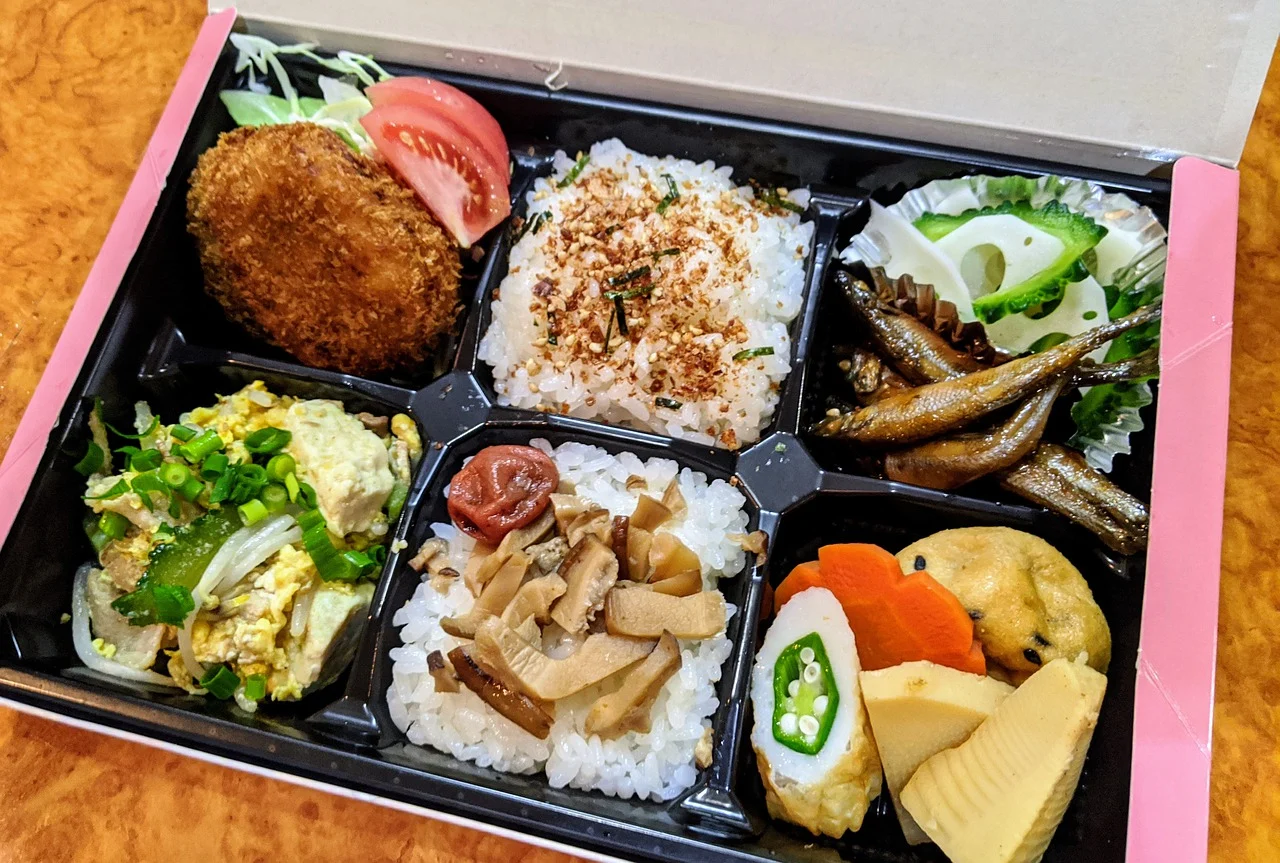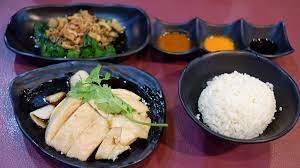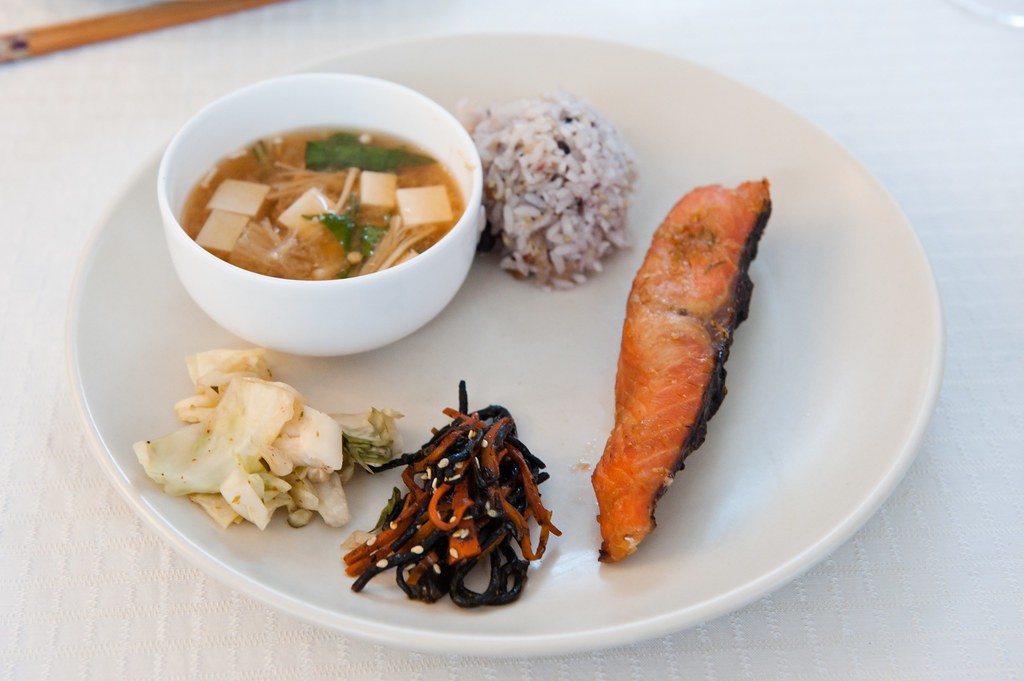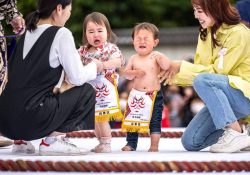Washoku (和食) is the name given to traditional Japanese cuisine. Gastronomy reflects the harmony (和) of the ingredients and flavors in which the meals (食) are submitted. The expression 'washoku traditionally means, WA: Japanese or from Japan / SHOKU: to eat, food.
Washoku is so important that the United Nations Educational, Scientific and Cultural Organization (Unesco) recognized it as a World Heritage Site in December 2013. Washoku values the seasonality of food and the qualities of each season of the year . Other traditional cuisines that are on the list of those chosen by Unesco are French, Mexican and Mediterranean.
Índice de Conteúdo
What led wasoku to receive the title?
In order for wasoku to receive the title of Intangible Cultural Heritage by Humanity, the following were taken into account: natural flavor, presentation, healthy eating and cultural reflexes. Regarding the natural flavor this culinary cares about making the use of ingredients taking into account the seasons. This demonstrates care and zeal for the flavors that nature has to offer. After all, each season has its ideal food and its flavors are more highlighted when they are in the right seasons. The chefs, therefore, adapt the menu according to climate change.
In terms of presentation, paying attention to the look is extremely important to get attention just by looking. After all, who is not delighted to see images of beautiful dishes. If you have a 'good face' we will certainly feel more attracted to the dish. The look is thought about the seasons, type of food, the message that the dish wants to convey (yes, food conveys messages like place, season, among others).
A healthy eating is an important factor to take into account, and although in each place there are its adaptations of traditional foods, only in Japan is it possible to eat that original 100% food. Cultural tradition is something that also needs to be present on the plate. the washoku it is seen as a meal to socialize with family, friends or close people. Aimed at strengthening relationships.

Ichijyu Sansai, Umami and Ghohan
ichijyu sansai (一汁三菜) means “one broth and three sides” and is considered the main idea of traditional washoku. O White rice it is the main dish accompanied almost necessarily by pickled cucumber known as tsukemono. Washoku consists of: A bowl of white rice; A small plate of tsukemono or konomono; A bowl of broth, such as miso or broth with vegetables, tofu, or seaweed Three side dishes such as meat, vegetables, fish, tofu, etc.
Some common ingredients that can compose the dish according to each taste are: Soy sauce (醤油); Sake (日本酒); Rice Wine (味醂); Rice Vinegar (酢); Shredded Canned Bonito Tuna (鰹節); algae konbu (昆布); Missô (味噌) and Shiitake Mushrooms.
Umami (うま味) is among the five tastes of the human palate, such as sour, sweet, salty, and bitter. The word of Japanese origin means “tasteful and pleasant taste”. This writing was chosen from the word umai (うまい) “delicious” and mi (味) “taste”. The characters 旨味 are used with a general meaning when a food is considered delicious. This taste was discovered on July 25, 1908 by Professor Kikunae Ikeda. It was officially recognized by the scientific community in the 2000s, after identifying specific receptors (mGluR4) for the amino acid glutamate (the main representative of umami taste) in the human tongue.

But to have access to these flavors you don't necessarily have to go to Japan (of course, if you have the opportunity, it will be great!) in several countries there are restaurants focused on Japanese culture and wasoku dishes. Some examples of these dishes are:
- Agedashi dofu (揚げ出し豆腐): Fried tofu served in a hot broth.
- Gyudon (牛丼): Bowl of rice topped with meat and onions.
- Kimpira gobo: Carrots and burdock fried in sesame oil and soy sauce.
- Nikujyaga (肉じゃが): Braised beef with potatoes, carrots and onions.
- Oden (おでん): Fish, eggs, white radish, konnyaku (こんにゃく) and various other ingredients cooked in a pot.
- Oyakodon (親子丼): Bowl of rice with chicken and eggs.
- Tenpura (天ぷら): Breaded vegetables and seafood.
- Tonjiru (豚汁): Miso broth with pork and vegetables.
- Tonkatsu (豚カツ): Breaded pork
- Shabu-shabu: A pot of slices of meat, vegetables and tofu, cooked in a broth and dipped in soy sauce or sesame sauce.
- Soba (蕎麦): Buckwheat noodles, served hot or cold and with various toppings.
- Sukiyaki (すき焼き): Thin slices of meat and vegetables cooked in a sweet broth and then dipped in raw egg.
- Yakitori (焼き鳥): Barbecue chicken on a skewer.

The Gohan rice it is fundamental of Japanese cuisine is also known as Japanese rice. The rice is served in a small bowl and the other items are placed separately on plates or bowls. Rice is served in its own small bowl, chawan, and each item of the course is placed in its own small plate (sara), or bowl (hachi), for each individual serving. This is even done at home. And it contrasts with Western-style dishes at home, where each person is given portions of the large serving plates of food, presented in the middle of a dining table.
Japanese style traditionally doesn't like different flavored dishes touching each other in the same dish. So the portions are separated in other containers, or even divided with sheets. dishes served in a traditional Japanese meal.
So, have you tried any of these or are you curious to know some?




